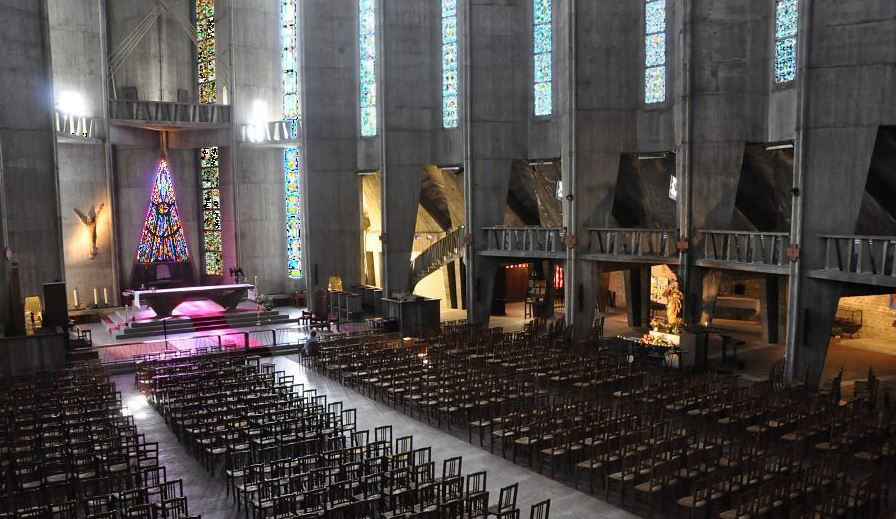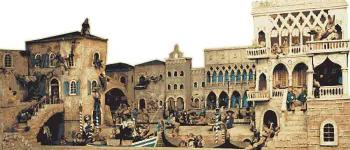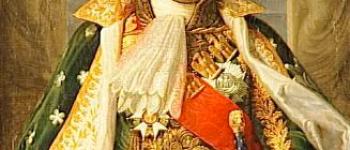
Considered a masterpiece of modern architecture, the church of Notre-Dame de Royan, inaugurated in 1958, was built in three years by architects Guillaume Gillet and Marc Hébrard, in collaboration with engineers Bernard Laffaille, René Sarger and Ou Tseng.
After the bombings of January 5, 1945, which destroyed the old neo-Gothic sanctuary dating from 1874 (located at the current Place Charles de Gaulle), it was decided to build a larger building, inspired by the aesthetics of the great Gothic cathedrals.
Completed in 1958, it is entirely built in rough concrete and was classified as a historical monument in 1988 and labeled "Monument of the 20th century" in 2004.
Notre-Dame de Royan
It houses an elliptical nave 45 meters long and 22 meters wide that can hold about 2,000 people, flanked by an ambulatory and a grandstand located three meters above the ground.
This tribune is lit by diamond-shaped stained glass windows depicting the Stations of the Cross.
The structure of the building is composed of alternating V-shaped prestressed reinforced concrete elements (the Laffaille system, named after the engineer Bernard Laffaille, who developed the process) alternating with huge glass canopies covering 500 m2, the work of master glassmaker Henri Martin-Granel.
The roof, in "saddle of horse" has a thickness of only 6 centimeters, which represents a feat for the time.
Inside the building, the parabolic vaults reach 36 meters at the extremities and 28 meters in the center.
The choir is illuminated by a stained glass window composed of a triangle of colored glass with blue and pink dominance, representing the "Virgin of the apocalypse crushing the serpent of evil", work of the painter Claude Idoux.
The large organs, remarkable, are among the most beautiful instruments of this type (sixteen feet). They are the work of the organ builder Robert Boisseau. The instrument has 47 stops, 3 manuals and more than 3,600 pipes and was classified as a Historic Monument in 2004.
Inside the church you can also see several works of art, in particular a black bronze Virgin Mary made by Gaston Watkin, Grand Prix de Rome for sculpture, a modernist metal statue representing Joan of Arc, and a statue of Nadu Marsaudon representing Saint Theresa.
The bell tower, 60 meters high, is surmounted by a six-meter high cross. It rises above an esplanade forming a forecourt, where an altar for open-air religious celebrations is located.
Responding to the wish of the Mayor of Royan at the time, Max Brusset, Guillaume Gillet designed the bell tower to straighten the silhouette of the city by creating a strong vertical signal, a "bitter" visible from the ocean as from the entrance to the city.
Notre-Dame de Royan
1, Avenue des Congrès,
17200 Royan
Tel: 05 46 38 33 03
http://www.notre-dame-royan.com/eglise/
Translated with www.DeepL.com/Translator
(free version)






